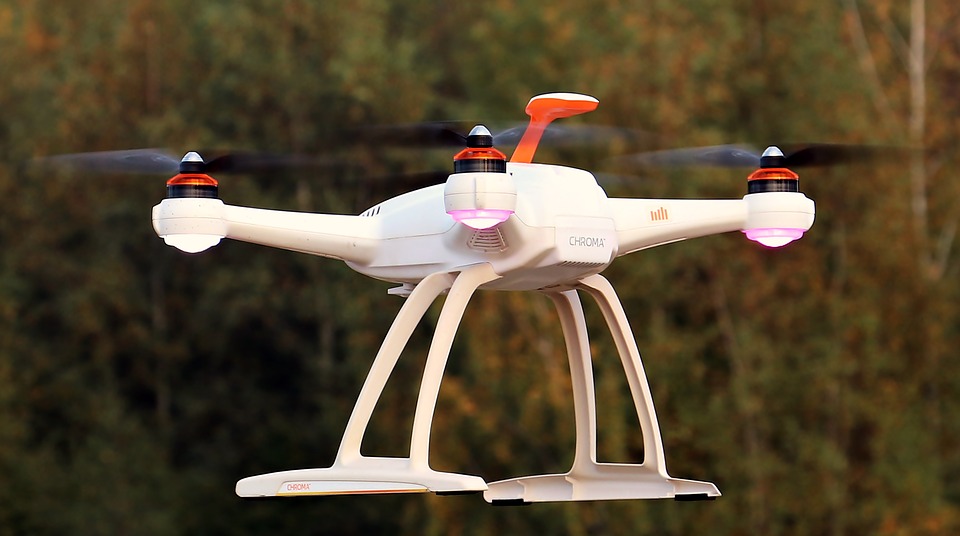If you were to gauge the market for drones solely on recent media headlines, it would be easy to come away with mixed messages. In August, Bloomberg reported that a period of hype surrounding drone tech is beginning to wane and startups in the sector are failing. However, a few months later, Goldman Sachs published a report predicting the industry would reach $100 billion by 2020. Morgan Stanley predicted that number could potentially grow to $1.5 trillion by 2040.
One possible explanation for the juxtaposition between startup failure and robust market projections is that many companies wading into the market have spread themselves thin by attempting to develop innovative hardware and software, according to Mike Winn, founder and CEO of startup DroneDeploy. Winn says that’s beginning to change, though.
“We’re seeing a wave of startups that are focused on specific markets or specific technologies,” he says. “At DroneDeploy, we’ve been able to just focus on software. Rather than juggle many challenges at once, our only aim is to create the best drone software in the commercial world.”
The key word in Winn’s strategy is “commercial.” While today’s drones are often associated with personal or hobbyist use, a November CNBC report projected the consumer sector will comprise just 17% of the drone market this year. The real winners in the drone industry will be the ones who “deliver true business value” and capitalize on a wide range of market sectors, according to a recent report from DroneDeploy.
The report is based on the results of a survey of more than 140 DroneDeploy customers, nearly two-thirds of whom said they use drones to improve operations and increase productivity. The survey also found 92% of respondents expect drones to become more common in their industry this year, and 25% of firms believe drones will be “ubiquitous” and “present everywhere” by the end of the year.
“We think of them as flying Swiss Army knives [that] can be outfitted to take simple images, video, thermal imaging, weather data, you name it,” said Winn. “In most industries, a shocking amount of questions can be answered with ‘let me get a drone up there and check it out.’”
The industries benefiting from drone capabilities
Winn says the oil and gas, construction, insurance, agriculture and solar energy industries have been some of the “most enthusiastic and prolific adopters” of DroneDeploy technology.
According to the DroneDeploy report, oil & gas companies are using drones to help companies catch leaks early, monitor miles of pipeline and mitigate farmland damage. Construction companies are using drones to expedite design, reduce subcontractor risk and give stakeholders visual updates of progress on a project. The technology also helps insurers clarify insurance claims by tracking the origin of natural disasters. And according to Winn, drones are assisting various environmental projects, including tracking penguin colonies and monitoring sea-level changes in islands affected by climate change.
What all of those industries have in common, Winn says, is their large footprints.
“When you’re talking about any industry that is spread out over a large geographic area — a farm or a solar field, for example — it’s extremely easy to illustrate how productivity goes up when you have a set of eyes that can fly to wherever you need it in a matter of seconds,” he says.
What the future holds
According to the DroneDeploy report, automation is the next step in the evolution of drone tech.
“Soon, self-driving drones will be programmed to fly a consistent path on their own, even taking off, landing and charging itself autonomously,” the report concludes. “In 2020, drones in autonomous docks will be seen on construction and oil and gas sites. Enabled by advancing regulation, with a click of a button, pilots will be able to launch a drone out of a dock to map the world.”
Winn believes that while drones might not change much in the next two years, they could be present on every job site by the end of the decade. He says that for many DroneDeploy customers, the early adoption stage is over. He also believes how companies use drones will evolve.
“Today, drones are well known as data capture devices, but in the future, we’ll see them perform the full lifecycle: capturing data, analyzing this information and then acting on it,” he says. “We’ll see agriculture drones crop scout huge fields, detect weeds and other issues, and follow up by sending commands to drones that can spray an herbicide. Improvements in drone technology, evolution of AI and improved algorithms will make drones not just more useful, but critical to the supply chains across almost every industry in the primary and secondary economies.”
Evan Milberg is SmartBrief’s infrastructure editor. Contact him @EvanMilberg or by email.
If you enjoyed this article, check out SmartBrief’s preview of the upcoming AGC Convention, which will include sessions about the latest construction technologies. For more articles like this, sign up today for SmartBrief’ newsletters.
